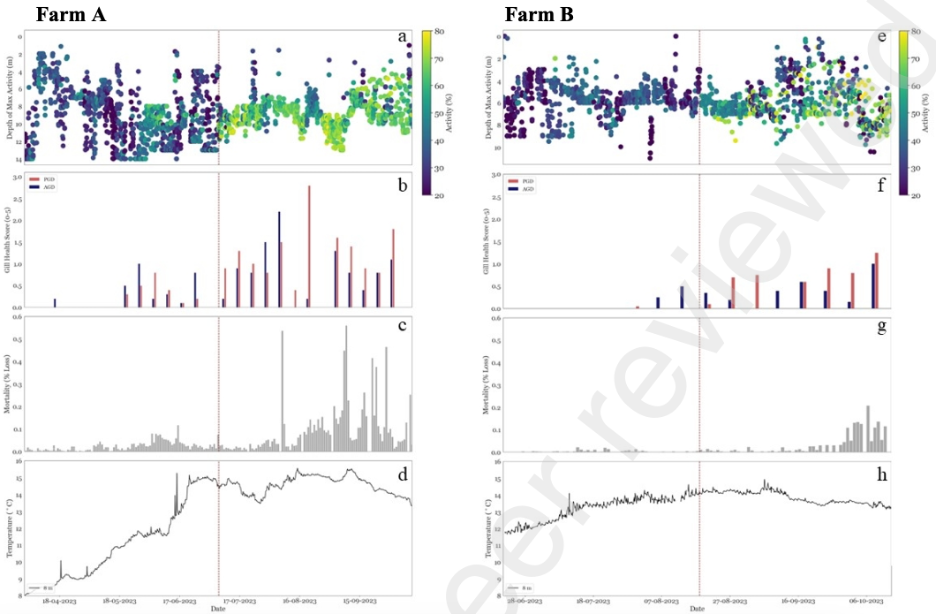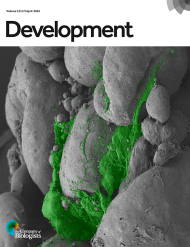Precision Farming in Aquaculture: Use of a non-invasive, AI-powered real-time automated behavioural monitoring approach to predict gill health and improve welfare in Atlantic salmon (Salmo salar) aquaculture farms
Posted on: 11 September 2024 , updated on: 12 September 2024
Preprint posted on 6 April 2024
Keeping an eye on the prize: Using Artificial Intelligence (AI) behavioural monitoring to improve Atlantic salmon farming welfare
Selected by Jasmine TaleviCategories: animal behavior and cognition, ecology, physiology
Background:
When we are stressed, we sometimes bite our nails or bounce our legs. In Atlantic Salmon, stress can present itself as changes in feeding or swimming behavior. Shoaling is one example which refers to changes in swimming behavior leading multiple fish to group together. Shoaling, in addition to other changes in feeding and swimming behavior, can occur in response to stress from predators, changes in the environment, or health status.
In a recent study, Burke and collaborators have leveraged our current understanding of swimming and feeding behavioral changes to improve Atlantic Salmon farming practices. By installing video cameras in fish net pens (Fig. 1 of the preprint), the researchers could use Artificial Intelligence (AI) machine learning technology to recognize real-time patterns in fish behavior.
Detecting patterns in fish behavior indicative of stress and compromised health could provide farmers with early warning signs of stress, specifically gill disease in the case of this study. Gill disease is a major concern in salmon farming worldwide. Two types of gill disease, Amoebic Gill Disease (AGD) and Proliferative Gill Disease (PGD), are especially common and both of these cause breathing difficulties, hinder growth, and cause mortality. Unfortunately, with increasing sea temperatures, occurrences of AGD and PGD may also increase, highlighting the need for the early detection of fish stress to help prevent disease rather than treat symptoms.
Methods:
As part of this preprinted study, the researchers selected two fish farms (Farm A and Farm B) in Scotland and deployed video camera(s) in 9-10 cages per farm. Several behavioral characteristics were monitored including depth of fish activity (Depth of Max Activity) and proximity of the fish to one another (Activity). Specific Feeding Rate (SFR) were also calculated as ((feed given/fish biomass) X 100). Weekly gill health examinations were carried out where signs of AGD or PGD were scored on a scale of 0 (healthy tissue) – 5 (necrotic tissue) and mortality was monitored throughout the experiment.

Highlighted Key Findings:
1) Proliferative Gill Disease (PGD) was the main driver of increased activity levels
The researchers observed an increase in group fish activity at both farms, which coincided with poorer gill health status, specifically PDG (Fig. 2 of the preprint). On average, there was a 15% increase in activity at Farm A (which experienced poorer gill health), while there was a 7.7% increase at Farm B.
2) Increased fish activity indicates shoaling behavior
Increases in fish activity was concentrated towards the centre of the cage indicating fish shoaling in this area (Fig. 2 of the preprint). This behaviour is often a stress response, commonly triggered by the presence of predatory stimuli or environmental stressors
3) Mortality increased and Specific Feeding Rate (SFR) decreased after the onset of poor gill health
At both farms mortality increased with the onset of poor gill health (Fig. 3 of the preprint). SFR also increased with the onset of poor gill health though more prominently at Farm A where gill health was poorer than Farm B.
4) Group-level assessments are more informative than individual fish assessments
When behavioral changes began to emerge and gill health scores became worse, individual-level assessments of fish did not significantly change. Though individual assessments for signs of illness (changes in eyes, fins, skin) are important, by the time the outward signs of poor health emerge the fish may already be compromised. Thus, group assessments, such as behavioral change, are important for predicting impacts to fish.


Why I Highlight This Preprint:
This preprint presents an innovative solution to a globally relevant issue. The technology tested offers a practical, easily deployable device that farms can readily implement. Additionally, this technique has the potential to enhance salmon welfare, contributing to improved food security.
Questions for the Authors:
- In comparison to individual fish assessments, approximately how much extra time could farmers gain by implementing this group-level behavioural assessment and what does this mean in terms of fish welfare?
- Did the net pen with one strategically placed camera capture enough fish activity to serve as an effective early warning sign? Will farmers need to deploy more than one camera per net pen?
doi: https://doi.org/10.1242/prelights.38340
Read preprintSign up to customise the site to your preferences and to receive alerts
Register hereAlso in the animal behavior and cognition category:
Responses to conflicting binocular stimuli in mouse primary visual cortex
Maitri Manjunath
Effects of transcranial photobiomodulation on peripheral biomarkers associated with oxidative stress and complex IV activity in the prefrontal cortex in rats subjected to chronic mild stress
Rickson Ribeiro, Marcus Oliveira
Psychedelics Align Brain Activity with Context
Loïk Holdrinet et al.
Also in the ecology category:
The cold tolerance of an adult winter-active stonefly: How Allocapnia pygmaea (Plecoptera: Capniidae) avoids freezing in Nova Scotian winters
Stefan Friedrich Wirth
Identifying gaps between scientific and local knowledge in climate change adaptation for northern European agriculture
Anatolii Kozlov
An experimental test of the influence of microbial manipulation on sugar kelp (Saccharina latissima) supports the core influences host function hypothesis
Jasmine Talevi
Also in the physiology category:
Imaging cellular activity simultaneously across all organs of a vertebrate reveals body-wide circuits
Muhammed Sinan Malik
Wide-ranging behavioral dysfunction in two mouse models of pathological human variants in the GRIK2 kainate receptor gene
Pushpinder Singh
Fibroblast growth factor 21 regulates neuromuscular junction innervation through HDAC4 in denervation-induced skeletal muscle atrophy
Jórdan Sampar
preLists in the animal behavior and cognition category:
Biologists @ 100 conference preList
This preList aims to capture all preprints being discussed at the Biologists @100 conference in Liverpool, UK, either as part of the poster sessions or the (flash/short/full-length) talks.
| List by | Reinier Prosee, Jonathan Townson |
9th International Symposium on the Biology of Vertebrate Sex Determination
This preList contains preprints discussed during the 9th International Symposium on the Biology of Vertebrate Sex Determination. This conference was held in Kona, Hawaii from April 17th to 21st 2023.
| List by | Martin Estermann |
Bats
A list of preprints dealing with the ecology, evolution and behavior of bats
| List by | Baheerathan Murugavel |
FENS 2020
A collection of preprints presented during the virtual meeting of the Federation of European Neuroscience Societies (FENS) in 2020
| List by | Ana Dorrego-Rivas |
Also in the ecology category:
November in preprints – DevBio & Stem cell biology
preLighters with expertise across developmental and stem cell biology have nominated a few developmental and stem cell biology (and related) preprints posted in November they’re excited about and explain in a single paragraph why. Concise preprint highlights, prepared by the preLighter community – a quick way to spot upcoming trends, new methods and fresh ideas.
| List by | Aline Grata et al. |
Biologists @ 100 conference preList
This preList aims to capture all preprints being discussed at the Biologists @100 conference in Liverpool, UK, either as part of the poster sessions or the (flash/short/full-length) talks.
| List by | Reinier Prosee, Jonathan Townson |
preLights peer support – preprints of interest
This is a preprint repository to organise the preprints and preLights covered through the 'preLights peer support' initiative.
| List by | preLights peer support |
EMBO | EMBL Symposium: The organism and its environment
This preList contains preprints discussed during the 'EMBO | EMBL Symposium: The organism and its environment', organised at EMBL Heidelberg, Germany (May 2023).
| List by | Girish Kale |
Bats
A list of preprints dealing with the ecology, evolution and behavior of bats
| List by | Baheerathan Murugavel |
Also in the physiology category:
October in preprints – DevBio & Stem cell biology
Each month, preLighters with expertise across developmental and stem cell biology nominate a few recent developmental and stem cell biology (and related) preprints they’re excited about and explain in a single paragraph why. Short, snappy picks from working scientists — a quick way to spot fresh ideas, bold methods and papers worth reading in full. These preprints can all be found in the October preprint list published on the Node.
| List by | Deevitha Balasubramanian et al. |
Biologists @ 100 conference preList
This preList aims to capture all preprints being discussed at the Biologists @100 conference in Liverpool, UK, either as part of the poster sessions or the (flash/short/full-length) talks.
| List by | Reinier Prosee, Jonathan Townson |
Fibroblasts
The advances in fibroblast biology preList explores the recent discoveries and preprints of the fibroblast world. Get ready to immerse yourself with this list created for fibroblasts aficionados and lovers, and beyond. Here, my goal is to include preprints of fibroblast biology, heterogeneity, fate, extracellular matrix, behavior, topography, single-cell atlases, spatial transcriptomics, and their matrix!
| List by | Osvaldo Contreras |
FENS 2020
A collection of preprints presented during the virtual meeting of the Federation of European Neuroscience Societies (FENS) in 2020
| List by | Ana Dorrego-Rivas |
TAGC 2020
Preprints recently presented at the virtual Allied Genetics Conference, April 22-26, 2020. #TAGC20
| List by | Maiko Kitaoka et al. |
Autophagy
Preprints on autophagy and lysosomal degradation and its role in neurodegeneration and disease. Includes molecular mechanisms, upstream signalling and regulation as well as studies on pharmaceutical interventions to upregulate the process.
| List by | Sandra Malmgren Hill |
Cellular metabolism
A curated list of preprints related to cellular metabolism at Biorxiv by Pablo Ranea Robles from the Prelights community. Special interest on lipid metabolism, peroxisomes and mitochondria.
| List by | Pablo Ranea Robles |











 (No Ratings Yet)
(No Ratings Yet)